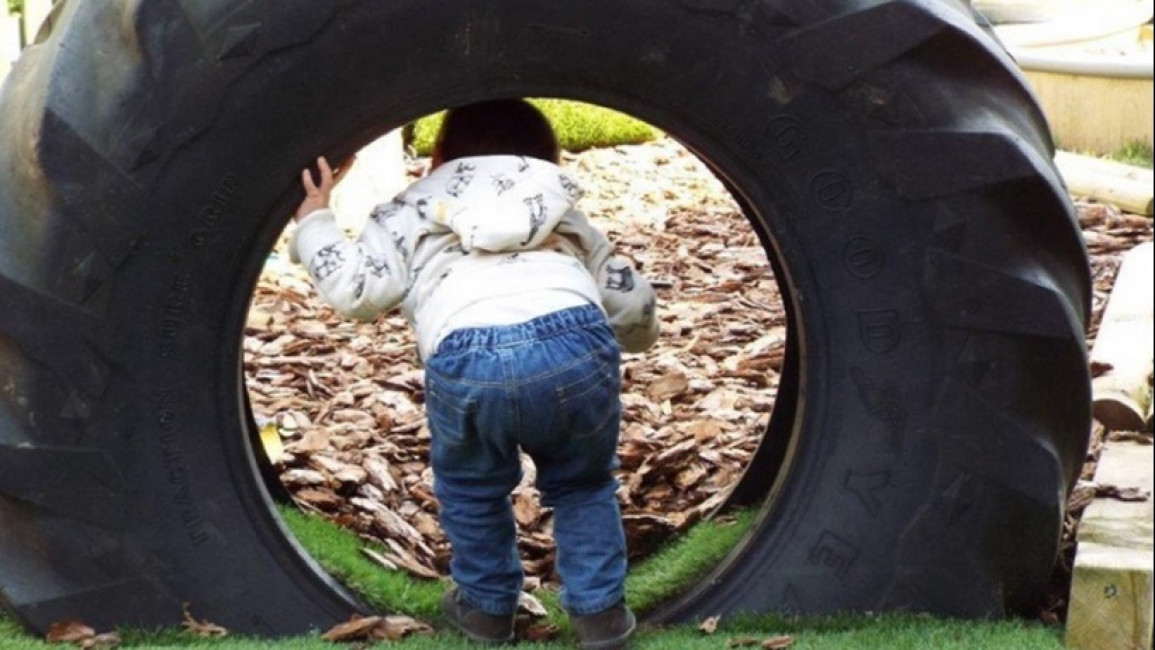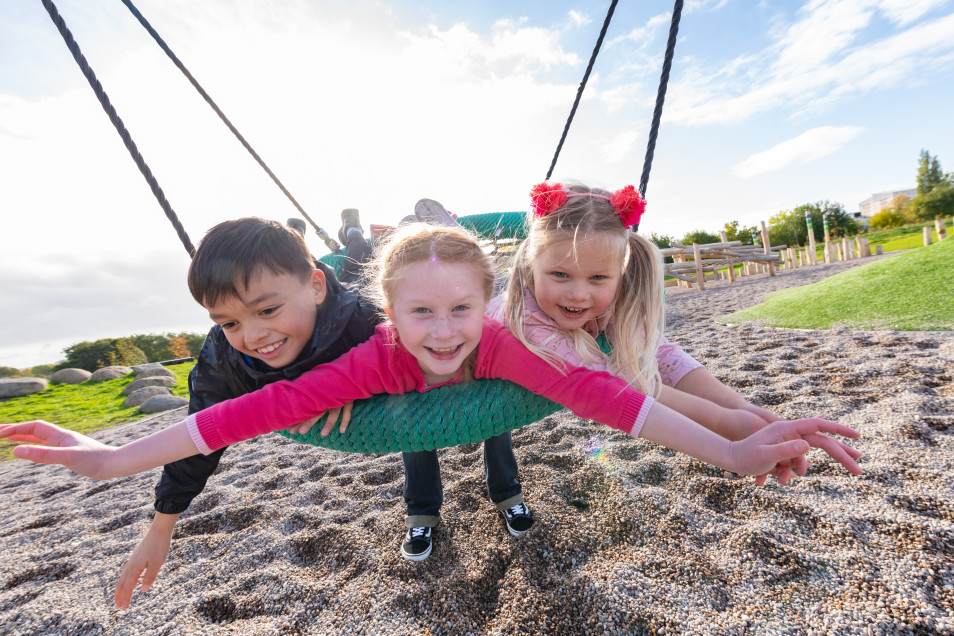Ideas and Insights
In Continental Europe, Sand is very widely accepted as safety surfacing for play areas and yet, despite this, it tends to be frowned upon in the UK. Every type of safety surfacing has various advantages and disadvantages but often these are not considered when designing playable spaces. We discuss below the things to consider when choosing safety surfacing and why we believe that sand or other loose fill surfaces should be used:
Play Value
“Research has indicated that children learn through play by manipulating their environment” – Laura Macmillan Johnson, School of Landscape Architecture, University of Arizona.
Think about it – when did you last see any children interacting with rubber wet pour? Even the expensively designed patterns such as hopscotch and other games hardly ever get any attention from children. However, give them sand and children just can’t resist playing with it. Think of those days on the beach when children will entertain themselves for hours on end with just a bucket and spade. Children will play longer in a play area where they can interact with materials such as sand. If such materials are absent, they will often bring them in, in the form of soil and stones – this is often perceived as litter and anti-social.
Environmental and Sustainable Consideration
Natural materials, such as sand or bark, require little manufacturing for the end product and therefore have less impact on the environment. They are often very easy to maintain and just require topping up at intervals, meaning that they are much more sustainable than rubber surfacing. Loose Fill materials are also very hard to vandalise and sand is fireproof reducing the risk of any injury or damage.
Safety and Compliance
Loose Fill surfacing has great impact absorbing properties – this can sometimes be reduced in freezing weather but so can rubber and grass. Sand, like all loose-fill, is better at protecting against falls with lateral movement. The high friction in rubber surfaces can increase the possibility of long bone injuries. The ease of moving loose fill material also allows for easy annual inspection of foundations, as required by European Safety Standard EN1176/7.
Inclusive Play
Approximately 21% of the UK population are classed as disabled, disability is a broad spectrum and does not necessarily just cover wheelchair users. Loose Fill material offers excellent play value for children with very poor mobility (outside of wheelchairs) it allows them to explore with natural elements. It also has low friction for restricted movement making it a lot more enjoyable for them. One issue many people often discuss with Loose Fill material is that it is not wheelchair friendly, although when designed with wheelchairs and the landscape in mind there are often ways to incorporate access for wheelchair users and the play value that the surfacing offers for the user outweighs this issue in most cases.
Atmosphere
Creating a good atmosphere is often the distinguishing factor of whether a playground is a success. People go to play areas to enjoy sensory relief from the artificial world in which we live, with its noise, colour, sharp lines and sensory overload. Natural spaces, built with natural materials and shapes, are calming to the senses and provide a gentle and pleasant atmosphere for people to enjoy.
Disadvantages and myths of sand and other loose fill surfaces
Animals and sand
We often hear people ask the question – how do you deal with animals and using sand as a toilet? Cats can cause a problem when sand play areas are located near houses, however; they are generally agro-phobic – when did you last see a cat in the middle of a park? And so sand areas in open spaces are unlikely to cause problems. A general maintenance point of daily checks can omit any worry about this and takes all of a few minutes to do.
When it comes to Dogs, they are often excluded from play areas already by fences, but if not, there is no evidence that they will prefer a sand “toilet” to any other areas. In fact, there is some evidence to suggest that the type of sand used in play areas is irritating to dogs in the way it gets between their claws.
The other thing to remember here is that children don’t just play in playgrounds. They play everywhere and dog excrement is a problem everywhere. The Toxicara Canis worm that can cause blindness in severe cases affects only 100 people a year and yet it is prevalent on playing fields and playgrounds around the country.
Disused Syringes in sand
We have yet to come across anyone who knows of this actually happening. We are sure that it has happened somewhere but it is definitely not a prevalent problem that we encounter.
Another factor is that any syringes in a play area are a hazard and need to be removed. I accept that in principle there may be a greater hazard from a syringe in a sand pit as it could feasibly get displaced below the surface and be unseen, however, I think that this is a cynical marketing illusion drawn up by suppliers of other surfaces to help their commercial cause
Broken Glass in Loose Fill Material
This is a misconception that we often come across, in reality, children falling onto glass in loose-fill surfacing are less likely to be hurt than falling onto glass on a hard surface such as rubber. The glass will move into the loose-fill material whereas rubber will resist such movement and press it back into the skin. It will, however, be harder to remove glass from sand, but this can be overcome with general maintenance.
Maintenance of Loose Fill over Hard Safety Surfacing
It goes without saying, that displacement of sand and other loose fill surfacing can be a problem even with good edgings and that these kinds of surfaces do require more day-to-day maintenance. However, the maintenance required is very simple and low skilled in comparison to hard rubber surfaces which will require less day-to-day upkeep but where maintenance is required it will be very expensive.
How we can help?
We would be more than happy to help anyone with any queries in regards to safety surfacing and choosing the correct surfacing on a project-by-project basis or in general. We can also offer CPD talks to any Landscape Architects on play value and the benefits of surfacing.
Timberplay are specialists in natural play with over 20 years’ experience, to find out more or book a CPD contact us here

